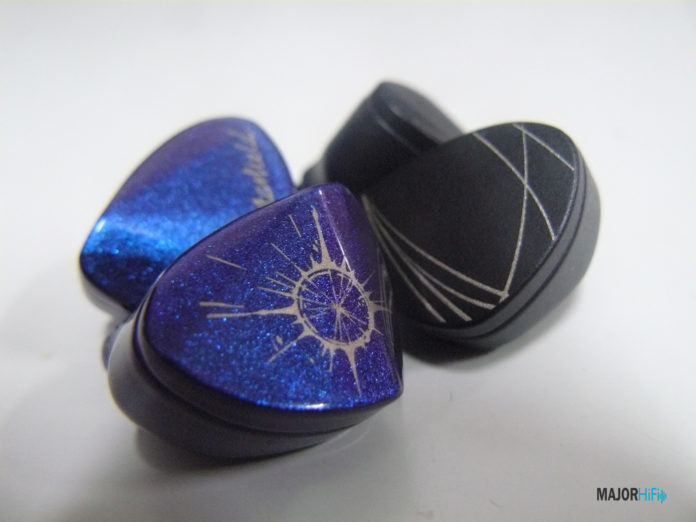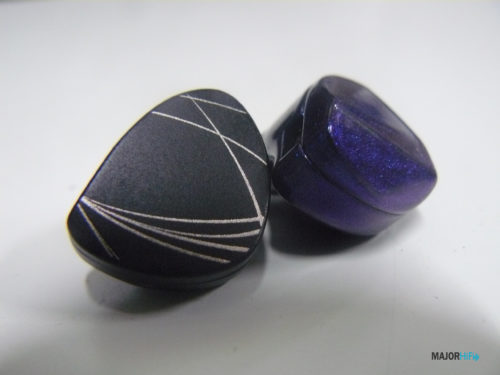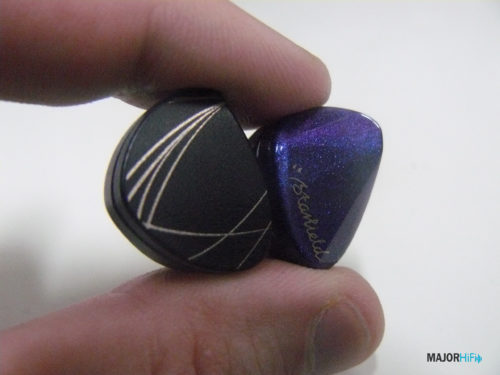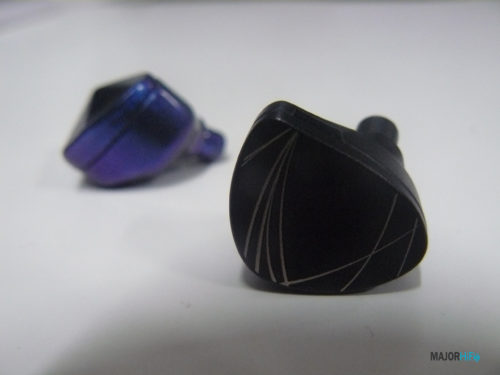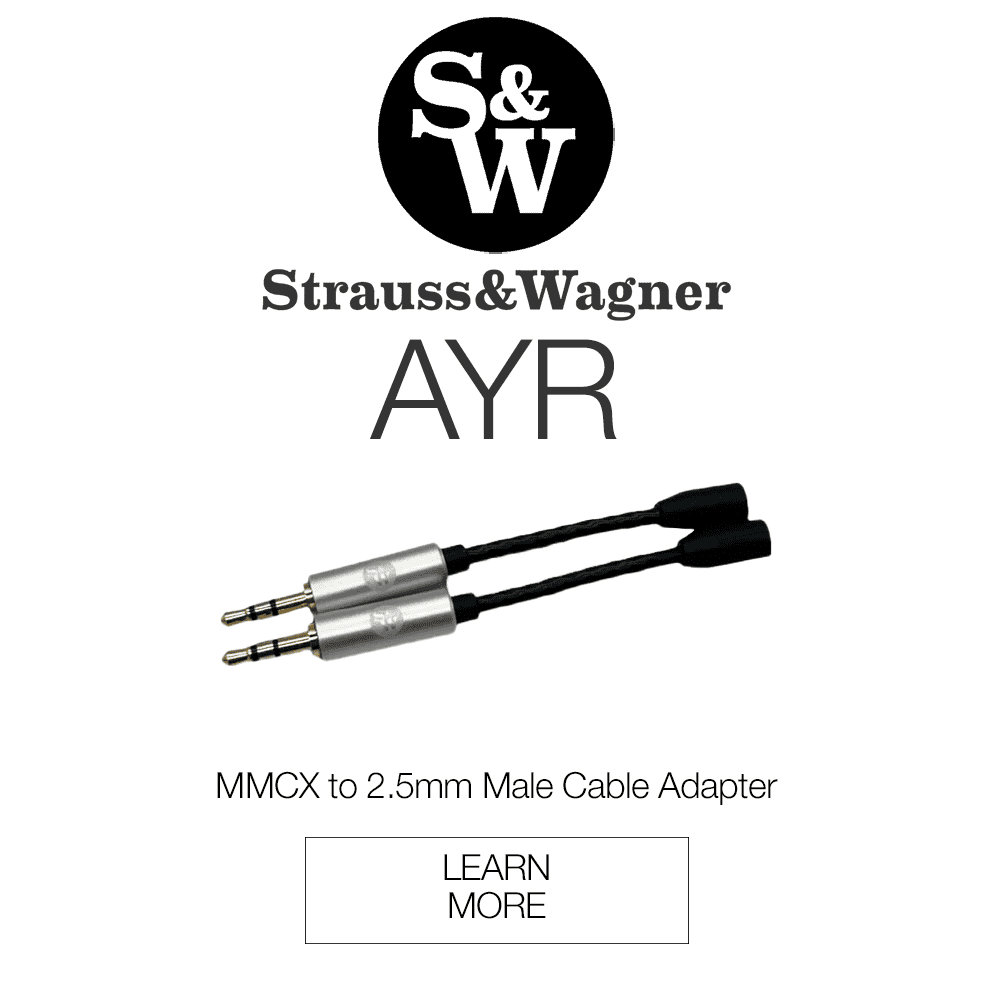2021 was a big year for Moondrop here on MajorHiFi. I’ve taken a look at a number of IEMs from their library, and have formed a good sense of where they stand as a brand. Their popularity has grown, with more people making decisions about what IEM brands might be best for them. It helps that two of Moondrops best earphones sit in an extremely generous price range compared to a host of other IEMs with a similar level of fidelity. The Aria and Starfield are both priced well below $150 and feature similar levels of detail in their sound signatures. But, which one is the best of the two?
Look and Feel
These IEMs couldn’t be more different when it comes to style. Both models are aesthetically in contrast with one another. While the Aria has this cold matte black shell with gold stripes, the Starfield has a glossy, glittery surface with a blue coloration that pops. They couldn’t look any more different than they already do, except for the shape of their housing. The Starfield has a slight ridge on its end, otherwise, they both have an equal level of comfort when worn. Both models feel natural within your ear and are relatively easy to wear.
Design
Both IEMs integrate a 10mm dynamic driver as its main unit. The Aira uses a liquid crystal diaphragm, while the Starfield uses a carbon nanotube weave. Usually crystal diaphragms indicate a better transient response, while the nanaotube diaphragm helps give the IEM a smoother and tougher signal that help identify timbral characteristrics a lot more clearly.
Soundstage
One of the biggest highlights to come out of both of these IEMs is their soundstages that appear far more advanced than they should. Although some models like these have impressed me in the past with their level of clarity, the Aria and Starfield operate on a whole other level. Their spatial imaging is some of the best you can get in its generous price range, fulfilling articulate spatial imaging that surrounds your headspace in intricate ways. But which one is better? It’s difficult to choose a clear winner here because of how dramatic these IEMs sound compared to IEMs around the same price, but when compared to each other, they show many similarities.
The Aria was the first one of the two I heard, so it made a longer-lasting impression on me considering it’s the least expensive of both variables. By the time I got to listening to the Starfield, I became a lot more used to this presence. So, when I first started listening to the Starfield, all I could immediately think about was the Aria. Both IEMs are deeply satisfying in their imaging, but eventually, I found a clear point where they differ. To me, the Starfield has an easier time quickly localizing spatial positioning, which culminates in a more accurate soundstage. The Aira has a similar level of transparency but forms an airier sound field that increases the space between layers, opening up the stereo image in height and depth.
Initially, I didn’t think the Aria could handle that much depth, and I didn’t pay as much attention to it considering the price. However, after comparing the Aria with the Starfield, it was easier to tell that the Aria displayed a more spherical headspace, which formed more of a bubble of sound that immersively distanced the sound elements. In comparison, the Starfield was more able to adhere to a traditional stereo field that was wide and articulate, while still being immersive in its own sense.
Low End
The clarity in the bass is present throughout both the Aria and the Starfield, but they each have their own way of reproducing it. With the Aria, the bass is thick and punchy. Transients happen quickly and are evenly balanced due to the spatial presence of the frequencies. This creates a low end that has an engrossing scale that emanates its detail quickly and effectively throughout its smooth timbre. The Starfield has a similar level of detail, but the effectiveness of the tone is a lot more soft and deliberate. Its sub-bass forms the timbre with a more active rumble, but the resonance of the lows is a lot more subtle. It’s less in-your-face than the Aria, but is still gratifying in its own way.
Mids
In terms of tone, the Starfield provides just enough more detail to place it over the Aria. While both IEMs succeed in providing a sense of naturalness to their midrange timbre, the Starfeild is slightly more tonally rich than the Aria. It’s really a matter of coloration. As the Aria’s low-mid emphasis help complete a warmer timbre, the Starfield showcases more clarity and evenness. You could say it is less of a fun sound compared to the Aria, but it retains more noticeable detail across more frequency bands. It can be intense yet balanced, striking a good level of spatial integrity with instrumentals and effects. However, both IEMs are still tunned to feature a striking vocal response that places performances forward in a commanding fashion.
Highs
For the treble, each of their timbres is a compliment to their sound signatures as a whole. The Starfield’s highs are a lot more realistic compared to the Aria, displaying a more accurate and smooth timbre, while also sporadically introducing other details like sparkle in sparse areas of the frequency response. With the Aria, the treble is far more textured, presenting you with a sweeter, more wispy resonance. Some of its fidelity is crisper than the Starfield, but still just as smooth and easy to perceive.
Summary
In reality, you can’t go wrong with either option, as they both assert their value quite well within their price range. Listening to the Aria and Starfield back to back it was hard to really point out the differences, but after a while both IEMs began to unravel. I found myself more engaged by the Aria’s combination of quickness and spatiality, but the Starfeild exhibited a lot more accuracy and transparency with instruments. Now, it’s pretty clear what both IEMs do best, but whichever one you choose, it’s hard to be disappointed by either.
The Moondrop Aria and Starfield are available at Audio46.
Compare the ranking of various headphones, earbuds and in-ear monitors using our tools.
Discuss this, and much more, over on our forum.
---MAJORHIFI may receive commissions from retail offers.


